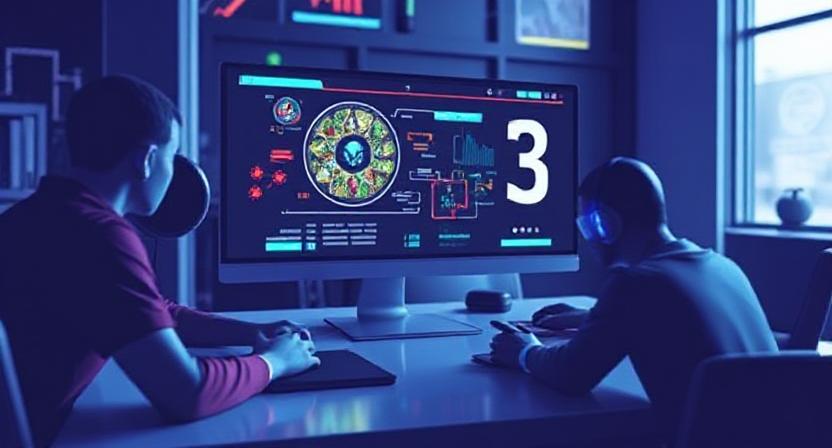Here’s a detailed, SEO-optimized blog post on “Web3 and GameFi in 2025: Still Relevant?”, written in simple language and including internal linking to related topics and service pages from Genieee:
Web3 and GameFi in 2025: Still Relevant?
In the fast-changing world of gaming and technology, terms like Web3 and GameFi have created a lot of buzz in recent years. But as we step into 2025, many are asking — Are Web3 and GameFi still relevant? Are these just trends of the past, or are they shaping the future of gaming?
Let’s explore how Web3 and GameFi are evolving in 2025 and whether developers and gaming companies should still focus on them.
What is Web3?
Web3 refers to the next generation of the internet that is built on blockchain technology. Unlike the traditional web (Web2), where data is controlled by centralized platforms, Web3 allows decentralized ownership, secure digital identities, and smart contracts that automate processes.
In gaming, Web3 enables players to own in-game assets like weapons, skins, or even land — all in the form of NFTs (Non-Fungible Tokens).
What is GameFi?
GameFi is a mix of Gaming and Decentralized Finance (DeFi). It rewards players with real-world value through blockchain-based rewards like cryptocurrencies, tokens, and NFTs. Popular GameFi models include Play-to-Earn (P2E), Move-to-Earn, and Own-to-Earn.
GameFi turns players into stakeholders — allowing them to earn income while playing and even trade or rent their digital assets.
Is Web3 Still Relevant in 2025?
Absolutely. Web3 is not just a trend — it’s part of a larger shift towards decentralization. In 2025, we are seeing:
- Increased blockchain adoption across industries, especially gaming.
- Better scalability with newer blockchain protocols like Polygon 2.0, Avalanche, and Optimism.
- Interoperability between games, wallets, and platforms.
- Improved user experience with Web2.5 tools that simplify onboarding for non-crypto users.
Web3 is still very relevant — especially in games where ownership, trading, and player-driven economies are important.
What About GameFi in 2025?
While the hype has cooled off compared to the peak of 2021-2022, GameFi is far from dead. In fact, it’s evolving into Sustainable GameFi, where:
- Gameplay quality is prioritized over just earning.
- Economic models are more balanced — avoiding Ponzi-like structures.
- Free-to-Play entry points help attract casual users.
- Regulation and compliance are improving trust among players and investors.
Games like Illuvium, Star Atlas, and Big Time are focusing on long-term ecosystems, combining AAA-level gameplay with Web3 incentives.
Why Should Game Developers Still Care?
If you’re a developer or investor, Web3 and GameFi still offer exciting opportunities:
- Monetization Models: Go beyond ads and in-app purchases with token economies.
- Community Building: Decentralized governance brings loyal and active communities.
- New Revenue Streams: Trading fees, NFT drops, staking, and DAO models.
- Cross-platform Engagement: Gamers can carry assets across multiple games in the ecosystem.
For help developing your own GameFi or blockchain game, consider working with an experienced Game Development Company in India that understands both traditional game mechanics and emerging Web3 technologies.
Use Cases of Web3 and GameFi in 2025
- NFT Marketplaces inside games
- Decentralized eSports Platforms
- Smart Contract-based Rewards
- In-game Asset Lending & Renting
- DAO-based Game Governance
Challenges Still Facing Web3 & GameFi
- Regulatory Uncertainty: Crypto laws differ by country.
- Onboarding Difficulty: Wallets, private keys, and tokens can be confusing for new users.
- Scalability: Large games still face network congestion issues.
- Scams and Low-Quality Projects: The industry still struggles with fraud and rug-pulls.
However, these challenges are being addressed, and serious players in the space are building more secure and user-friendly solutions.
What’s the Future?
Web3 and GameFi are likely to become standard layers of the gaming industry in the future, not separate niches. Games will offer optional blockchain features like NFT ownership, while traditional studios will adopt hybrid models.
Think of Web3 as a tool, not a genre. In 2025, smart game studios are using it to enhance user engagement, build stronger communities, and create lasting economies.
Final Thoughts: Web3 and GameFi Are Still Worth It
In 2025, Web3 and GameFi are very much alive — just quieter, smarter, and more refined. For developers, studios, and investors looking to future-proof their games, embracing Web3 features and GameFi mechanics can still provide real value.
If you’re planning to build your next game with Web3 elements, partner with a trusted Game Development Company in India that has experience in blockchain and NFT integration.
Related Blogs You May Like
- Top 10 Game Development Trends to Watch in 2025
- How to Build a Play-to-Earn Game That Actually Works
- Benefits of Hiring a Game Development Company in India
- Future of NFT Gaming: What’s Next After the Hype?
Want to explore GameFi or Web3 for your game project? Contact Genieee today and let’s build the future of gaming together!
